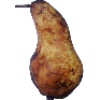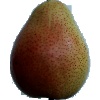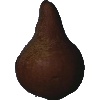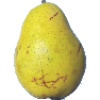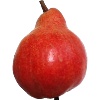How to Perform Fruit Classification with Deep Learning in Keras
April 8, 2020 by Chris
Fruits are very common in today's world - despite the abundance of fast food and refined sugars, fruits remain widely consumed foods. During production of fruits, it might be that they need to be sorted, to give just one example. Traditionally being performed mechanically, today, deep learning based techniques could augment or even take over this process.
In today's blog post, we're going to work towards an example model with which fruits can be classified. Using the Fruits 360 dataset, we'll build a model with Keras that can classify between 10 different types of fruit. Relatively quickly, and with example code, we'll show you how to build such a model - step by step. For this to work, we'll first take a look at deep learning and ConvNet-based classification and fruit classification use cases. Then, we start our work.
Are you ready? Let's go! 😎
Deep learning: about classification and ConvNets
Before diving into creating some model code, I think that it's nice to take a look at some theory first.
In this case, theory about Convolutional Neural Networks, which are the type of deep learning model that we will be using today.
When humans take a look at images, they automatically slice the images into tiny fractions of recognizable objects - for example, a door is built out of a piece of wood, with often some paint, and a door handle.

Fruit classification use cases
Now, besides the educational aspects, why would classifying fruits be a good idea?
Can we think of some use cases as to why we could use Deep Learning for fruit classification?
Here's one, for starters:
https://www.youtube.com/watch?v=h0-NS3z-EXo
I really like what they built! 😀
Now, this immediately suggests a proper use case for fruit classification: separating ripe fruits from the others. Another one: checking whether certain fruits are spoiled, e.g. because fungus is present on the skin. Whereas this process was performed primarily mechanically until now, Deep Learning can also be used.
Let's see if we can create such a model ourselves! :)
Today's dataset: Fruits 360
For today's blogpost, we will be using the Fruits 360 dataset. The dataset is marketed as follows: "Fruits 360 dataset: A dataset of images containing fruits and vegetables". At least you know what you're getting 😉
It can be downloaded at Kaggle and be used under the - this is somewhat unclear - MIT License or CC-BY-SA 4.0 license. In any case, the original work that generated this dataset can be found back in the references of this blog - check out Muresan & Oltean (2018) if you wish to know more.
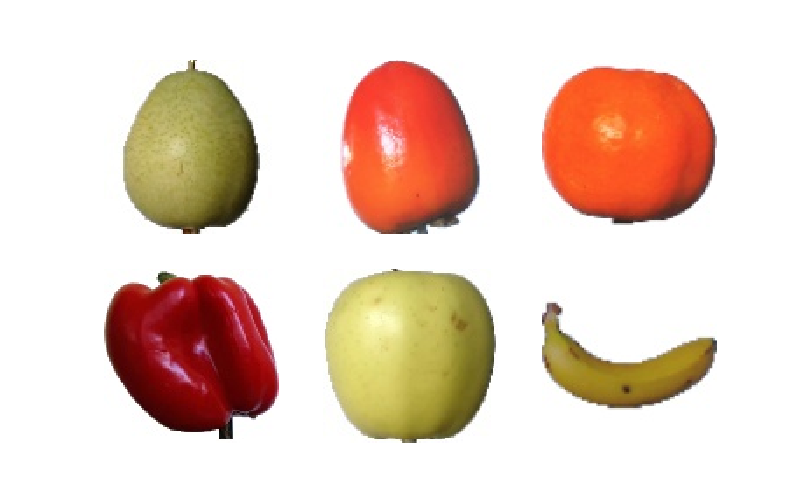
Some characteristics of the data:
- Total number of images: 82.213 images
- Training set size: 61.488 images
- Test set size: 20.622 images
- Train/test split: approximately 75/25
- Number of classes: 120 fruits and vegetables
- Image size: 100 x 100 pixels, RGB.
We must also note that different varieties of the same fruit are stored as belonging to different classes. As we'll see later, for today's blog post, there is some merging to do :)
Visualization code
Should you wish to generate the visualization yourself, here's the code that I used. Some pointers:
- Make sure to have Matplotlib and PIL installed.
- Create a directory, say
imagecopies, and copy some of the dataset files there. - Configure the number of
files_per_rowbased on the number of files that you've copied (e.g., you cannot setfiles_per_row = 3if you have copied 5 files) - or copy more files. - Run the code!
# Imports
import os
import matplotlib.pyplot as plt
from PIL import Image
import math
# Configuration
dir_with_examples = './imagecopies'
files_per_row = 3
# List the directory and perform computations
files_in_dir = os.listdir(dir_with_examples)
number_of_cols = files_per_row
number_of_rows = int(len(files_in_dir) / number_of_cols)
# Generate the subplots
fig, axs = plt.subplots(number_of_rows, number_of_cols)
fig.set_size_inches(8, 5, forward=True)
# Map each file to subplot
for i in range(0, len(files_in_dir)):
file_name = files_in_dir[i]
image = Image.open(f'{dir_with_examples}/{file_name}')
row = math.floor(i / files_per_row)
col = i % files_per_row
axs[row, col].imshow(image)
axs[row, col].axis('off')
# Show the plot
plt.show()
Dataset structure
After downloading and unpacking the dataset, we can see two folders that are of interest for today's blog post: the Train folder, with all the training data, and the Test data, with all the testing data (once again, split in an approximate 75/25 fashion).
Going one level deeper, here's (a part of) the contents of the Train folder:
As you can see, the fruits are indeed stored nicely together - on a variety basis. That means that we can see, for instance, 'pear', 'pear abate', 'pear forelle', and so on. Opening up the folder for 'Banana' yields the following:
Many bananas! 🍌
Preparing our dataset for Deep Learning
Before we continue, there is a trade-off to make: will we create a model that highly specializes in variety, or will we create a generic model that can be capable of recognizing some fruits?
This is a relatively common question: do we keep at a more general level, or not? In the case where we want to specialize, we likely have to create a deeper model, which is hence more complex, and also more prone to overfitting. The other scenario might sound great, but it comes with a drawback too: the varieties of different fruit don't always match well. For example, when we want to generalize all pear varieties into one class:
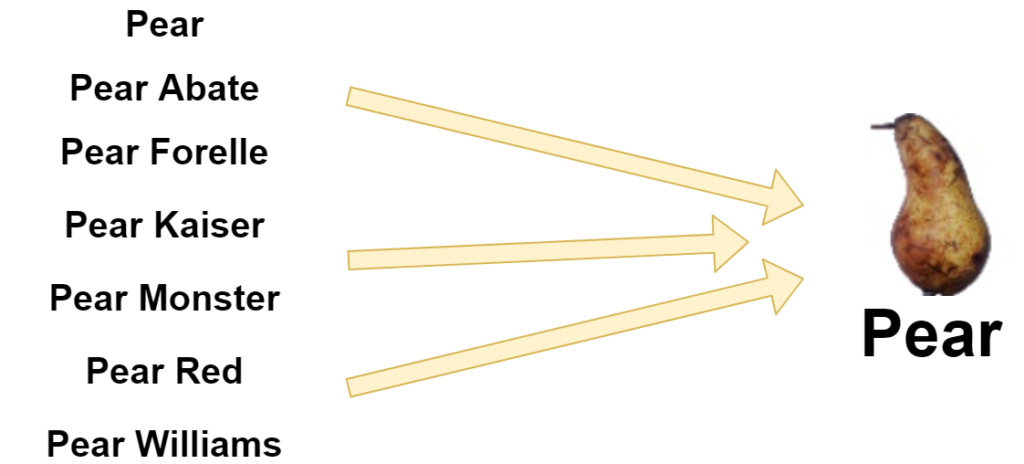
...we would generalize a lot of varieties that look a lot like each other...right? Nope:
Those are all pears!
In today's blog, for the sake of simplicity, we'll skip this question altogether. Instead, we'll do this:
- Besides the Training and Test folders, we create two additional ones: Training_smaller and Test_smaller.
- From the original Training and Test folders, we copy the fruits we wish to classify for. Hence, we avoid the question by manually selecting a few fruit classes that we wish to distinguish. In my case, I chose a random set of classes - but make sure that they're identical in both folders. In my case, I chose Apricot, Avocado, Banana, Blueberry, Cauliflower, Cocos, Eggplant, Hazelnut, Kiwi and Limes.
- Now, copy those folders into the Training_smaller and Test_smaller folders, respectively.
This should be the contents of that particular folder:

Building a Keras model for fruit classification
Time to create an actual machine learning model! In today's blog, we're using the Keras framework (keras.io) for deep learning. Created by François Chollet, the framework works on top of TensorFlow (2.x as of recently) and provides a much simpler interface to the TF components. In my opinion, it makes creating machine learning models really easy code-wise... but you still need to know what you're doing ML-wise! ;-)
Model imports
As always, the first thing we do is import our dependencies. As you can see, we'll use the Sequential API, which allows us to stack each neural network layer on top of each other easily. We also import Dense, Flatten and Conv2D - the default layers in such a network. Then, we import sparse categorical crossentropy for computing loss, Adam for optimization, and an ImageDataGenerator for loading our images from folder.
# Imports
from tensorflow.keras.models import Sequential
from tensorflow.keras.layers import Dense, Flatten, Conv2D
from tensorflow.keras.losses import sparse_categorical_crossentropy
from tensorflow.keras.optimizers import Adam
from tensorflow.keras.preprocessing.image import ImageDataGenerator
Data & model configuration
The next step - not unsurprisingly given what we normally do - is specifying some configuration options. Today, we'll split them between data related configuration and model configuration.
The data configuration is simple: we simply set the paths to the training data and the testing data.
The model configuration is a little bit more complex, but not too difficult.
We specify the batch size to be 25 - which means that 25 samples are fed to the model for training during every forward pass. The image width is 25x25 pixels, and as we are using RGB images, the number of channels is 3.
25 by 25 pixels? Strange! Didn't you write that our input data is 100 by 100 pixels?
Indeed - and you're a very diligent reader :) However, as you will see later, we're going to resize our samples to 25 by 25 pixels to speed up the training process. Good catch though!
For loss, as said, we'll be using sparse categorical crossentropy, which can work with integer targets. As the number of classes we're using is 10, we set no_classes to 10. The number of epochs (or iterations) is set to 25, which is low - very low - but is okay for education purposes. As we shall see, with 10 classes, we get some very good performance regardless. In normal settings, you would usually have thousands of epochs, though. For optimization, we use the Adam optimizer - which is a good default choice, and extends traditional gradient descent with local parameter updates and momentum-like optimization (click here for more information). Verbosity is set to 1, which means True, which means that all the output is displayed on screen. Normally, we set this to False, as prints slightly slow down the training process, but that's not the purpose of today's post - so we keep it on.
# Data configuration
training_set_folder = './fruits-360/Training_smaller'
test_set_folder = './fruits-360/Test_smaller'
# Model configuration
batch_size = 25
img_width, img_height, img_num_channels = 25, 25, 3
loss_function = sparse_categorical_crossentropy
no_classes = 10
no_epochs = 25
optimizer = Adam()
verbosity = 1
Loading & preparing the data
Next, we load and prepare the data. First, we set the input_shape - which is required for the input layer. Then, we create a generator - an ImageDataGenerator, to be precise.
What is such a generator? For a simple one, click here, but let's try to explain things in layman's terms here as well.
A generator looks like an iterative function, i.e. some kind of loop, which you can use to 'generate' new samples. Although this might sound weird, it's not - because you can also use such generators to read existing ones - but for the model, they're like new.
Now, in Keras, ImageDataGenerators can be configured substantially - allowing you to specify things like image augmentation, and so on. We don't do this today. The only thing we do is rescale the data, so that the values are closer to a mean of 0 and a variance of 1. This is often recommended, as it helps the training process, with fewer weight swings during optimization.
Next, we feed data to the data generator. We do so with flow_from_directory, which allows us to load all the data from folder. We specify the folder where our training data is located, specify save_to_dir - which saves the intermediate samples to some directory, in jpeg format - as well as batch size and class_mode (sparse because of our loss funciton). Then, target_size is set to (25, 25) - that's the resizing I just discussed!
# Determine shape of the data
input_shape = (img_width, img_height, img_num_channels)
# Create a generator
train_datagen = ImageDataGenerator(
rescale=1./255
)
train_datagen = train_datagen.flow_from_directory(
training_set_folder,
save_to_dir='./adapted-images',
save_format='jpeg',
batch_size=batch_size,
target_size=(25, 25),
class_mode='sparse')
Specifying the model architecture
Now, back to the defaults - a model architecture that is very similar to the one we created in our blog about Conv2D.
It's very simple: using the Sequential API, we stack four convolutional layers for feature extraction, subsequently flatten the feature maps into a one-dimensional input for the densely-connected layers, which generate a multiclass probability distribution with Softmax. This distribution, adhering to the laws of probability theory, give us the ultimate class prediction - precisely what we want.
Additionally, we display a model summary for visualization purposes.
# Create the model
model = Sequential()
model.add(Conv2D(16, kernel_size=(5, 5), activation='relu', input_shape=input_shape))
model.add(Conv2D(32, kernel_size=(5, 5), activation='relu'))
model.add(Conv2D(64, kernel_size=(5, 5), activation='relu'))
model.add(Conv2D(128, kernel_size=(5, 5), activation='relu'))
model.add(Flatten())
model.add(Dense(16, activation='relu'))
model.add(Dense(no_classes, activation='softmax'))
# Display a model summary
model.summary()
Model compilation & starting the training process
As our final step, we compile the model - which means instantiating it, as we had previously created the skeleton / the framework only - and fit the data (by means of the generator), so that the training process is started. Note that we use the configuration options that we defined previously to configure both the instantiation and the training process.
# Compile the model
model.compile(loss=loss_function,
optimizer=optimizer,
metrics=['accuracy'])
# Start training
model.fit(
train_datagen,
epochs=no_epochs,
shuffle=False)
Full model code
It's also possible to obtain the model code as a whole, if you wish to start playing around immediately. Here you go:
# Imports
from tensorflow.keras.models import Sequential
from tensorflow.keras.layers import Dense, Flatten, Conv2D
from tensorflow.keras.losses import sparse_categorical_crossentropy
from tensorflow.keras.optimizers import Adam
from tensorflow.keras.preprocessing.image import ImageDataGenerator
# Data configuration
training_set_folder = './fruits-360/Training_smaller'
test_set_folder = './fruits-360/Test_smaller'
# Model configuration
batch_size = 25
img_width, img_height, img_num_channels = 25, 25, 3
loss_function = sparse_categorical_crossentropy
no_classes = 10
no_epochs = 25
optimizer = Adam()
validation_split = 0.2
verbosity = 1
# Determine shape of the data
input_shape = (img_width, img_height, img_num_channels)
# Create a generator
train_datagen = ImageDataGenerator(
rescale=1./255
)
train_datagen = train_datagen.flow_from_directory(
training_set_folder,
save_to_dir='./adapted-images',
save_format='jpeg',
batch_size=batch_size,
target_size=(25, 25),
class_mode='sparse')
# Create the model
model = Sequential()
model.add(Conv2D(16, kernel_size=(5, 5), activation='relu', input_shape=input_shape))
model.add(Conv2D(32, kernel_size=(5, 5), activation='relu'))
model.add(Conv2D(64, kernel_size=(5, 5), activation='relu'))
model.add(Conv2D(128, kernel_size=(5, 5), activation='relu'))
model.add(Flatten())
model.add(Dense(16, activation='relu'))
model.add(Dense(no_classes, activation='softmax'))
# Display a model summary
model.summary()
# Compile the model
model.compile(loss=loss_function,
optimizer=optimizer,
metrics=['accuracy'])
# Start training
model.fit(
train_datagen,
epochs=no_epochs,
shuffle=False)
Running the model: our results
Time to run the model. Save your code somewhere, e.g. as cnn.py, and make sure that the folder references in the data configuration are pointed correctly. Also make sure that you have the dependencies installed: at least TensorFlow with version 2.0+. Then, open up a terminal, cd to the folder where you stored your file, and run e.g. python cnn.py.
The training process should begin:
Model: "sequential"
_________________________________________________________________
Layer (type) Output Shape Param #
=================================================================
conv2d (Conv2D) (None, 21, 21, 16) 1216
_________________________________________________________________
conv2d_1 (Conv2D) (None, 17, 17, 32) 12832
_________________________________________________________________
conv2d_2 (Conv2D) (None, 13, 13, 64) 51264
_________________________________________________________________
conv2d_3 (Conv2D) (None, 9, 9, 128) 204928
_________________________________________________________________
flatten (Flatten) (None, 10368) 0
_________________________________________________________________
dense (Dense) (None, 16) 165904
_________________________________________________________________
dense_1 (Dense) (None, 10) 170
=================================================================
Total params: 436,314
Trainable params: 436,314
Non-trainable params: 0
_________________________________________________________________
Train for 199 steps
Epoch 1/25
2020-04-08 19:25:01.858098: I tensorflow/stream_executor/platform/default/dso_loader.cc:44] Successfully opened dynamic library cublas64_100.dll
2020-04-08 19:25:02.539857: I tensorflow/stream_executor/platform/default/dso_loader.cc:44] Successfully opened dynamic library cudnn64_7.dll
2020-04-08 19:25:04.305871: W tensorflow/stream_executor/cuda/redzone_allocator.cc:312] Internal: Invoking ptxas not supported on Windows
Relying on driver to perform ptx compilation. This message will be only logged once.
199/199 [=======================>
...and eventually end with quite some training performance:
Epoch 25/25
199/199 [==============================] - 13s 64ms/step - loss: 1.7623e-06 - accuracy: 1.0000
The next step you could now take is check for overfitting, and if it occurs, apply techniques like Dropout - or L2 regularization. Perhaps, also ensure that your data set gets bigger, possibly more varied or augmented through the Image Data Generator. But that's for another time! ;-)
Summary
In today's blog post, we looked at convolutional neural networks - and how they can be used for Fruit Classification with Deep Learning. We took a look at the Fruits 360 dataset, which is created by the authors of the article referenced below, and is a nice dataset containing a large variety of fruits.
Subsequently, we created an actual example, with the Keras Deep Learning framework. With the example, we trained a model that could attain adequate training performance quickly. Left to do: checking for overfitting, adapting, and making things even better.
Thank you for reading MachineCurve today! 😎 If you have any questions, remarks or comments, please feel free to drop a message in the comments section below 👇. I'll happily answer the questions and help where I can. Happy engineering! 👩💻
References
Horea Muresan, Mihai Oltean, Fruit recognition from images using deep learning, Acta Univ. Sapientiae, Informatica Vol. 10, Issue 1, pp. 26-42, 2018.

Hi, I'm Chris!
I know a thing or two about AI and machine learning. Welcome to MachineCurve.com, where machine learning is explained in gentle terms.
Getting started
Foundation models
Learn how large language models and other foundation models are working and how you can train open source ones yourself.
Keras
Keras is a high-level API for TensorFlow. It is one of the most popular deep learning frameworks.
Machine learning theory
Read about the fundamentals of machine learning, deep learning and artificial intelligence.
Most recent articles
January 2, 2024
What is Retrieval-Augmented Generation?
December 27, 2023
In-Context Learning: what it is and how it works
December 22, 2023
CLIP: how it works, how it's trained and how to use it
Article tags
Most popular articles
February 18, 2020
How to use K-fold Cross Validation with TensorFlow 2 and Keras?
December 28, 2020
Introduction to Transformers in Machine Learning
December 27, 2021
StyleGAN, a step-by-step introduction
July 17, 2019
This Person Does Not Exist - how does it work?
October 26, 2020
Your First Machine Learning Project with TensorFlow 2.0 and Keras
Connect on social media
Connect with me on LinkedIn
To get in touch with me, please connect with me on LinkedIn. Make sure to write me a message saying hi!
Side info
The content on this website is written for educational purposes. In writing the articles, I have attempted to be as correct and precise as possible. Should you find any errors, please let me know by creating an issue or pull request in this GitHub repository.
All text on this website written by me is copyrighted and may not be used without prior permission. Creating citations using content from this website is allowed if a reference is added, including an URL reference to the referenced article.
If you have any questions or remarks, feel free to get in touch.
TensorFlow, the TensorFlow logo and any related marks are trademarks of Google Inc.
PyTorch, the PyTorch logo and any related marks are trademarks of The Linux Foundation.
Montserrat and Source Sans are fonts licensed under the SIL Open Font License version 1.1.
Mathjax is licensed under the Apache License, Version 2.0.



